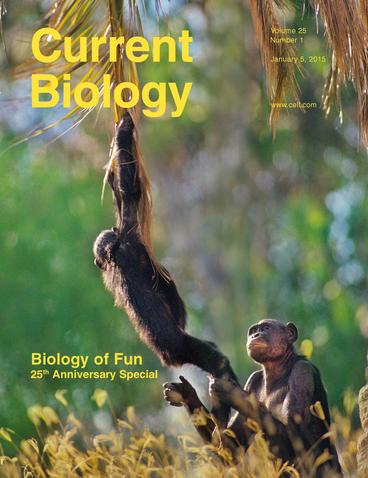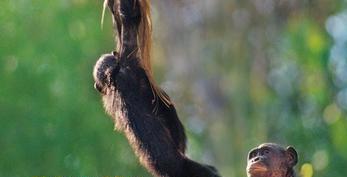[dropcap style=”font-size:100px; color:#992211;”]H[/dropcap]umans are not alone in having fun from time to time, and the health benefits of humour have long been known.
Nevertheless, the image of a clinical study of fun strikes fear into the heart. For anyone who spent last week being goaded into endless ‘traditional’ boardgame sessions by swivel-eyed relatives on the verge of nervous breakdown, there can only be one question:
Are We Having FUN yet?!
Current Biology celebrates its 25th birthday with a special issue on January 5, 2015 on the biology of fun (and the fun of biology). In a collection of essays and review articles, the journal presents what we know about playfulness in dogs, dolphins, frogs, and octopuses. It provides insights on whether birds can have fun and how experiences in infancy affect a person’s unique sense of humor.
“Fun is obviously–almost by definition–pleasurable, rewarding, but in a way that is distinct from the pleasures of satisfying basic needs, such as the drives to reduce thirst or hunger or to reproduce,” says Current Biology Editor Geoffrey North. “The articles in this special issue consider examples of what appear to be fun and play in a broad range of animal species and the insights that can be gained into how the behaviors might contribute to evolutionary fitness.”
How do we get our sense of humor?
Psychologists Vasu Reddy and Gina Mireault, of the University of Portsmouth and Johnson State College respectively, offer a comprehensive overview of how, in infancy, reactions to absurd behavior like pulling hair or blowing raspberries, as well as teasing others, offer a window into how aware young children are of others’ intentions. “As [infants] discover others’ reactions  and, indeed, others’ minds, they also discover the meaning of ‘funny’, a construct that varies across and within cultures, regions, families, and even dyads,” write the authors. “Infants become attuned to the nuances in humour through their social relationships, which create the practice of contexts of humorous exchange.” The scientists note that children with atypical patterns of development may exhibit different senses of humor compared to their peers.
and, indeed, others’ minds, they also discover the meaning of ‘funny’, a construct that varies across and within cultures, regions, families, and even dyads,” write the authors. “Infants become attuned to the nuances in humour through their social relationships, which create the practice of contexts of humorous exchange.” The scientists note that children with atypical patterns of development may exhibit different senses of humor compared to their peers.
Why do adult apes play?
Based on her observations of a wild bonobo community, primatologist Isabel Behncke of the University of Oxford makes the case that play in bonobo adults could be a key adaptation that underlies social bonding and intelligence. She describes how bonobos in the Wamba community of Central Africa naturally engage in chasing, hanging, and water games despite differences in age and sex. “Play makes individuals more adaptable because it makes them more social; and more successful in their sociality as a result of being more adaptable,” Dr. Behncke writes. “Life-long play is a bridge between sociality and adaptability.”
Does playfulness spur creativity?
Ethologist Sir Patrick Bateson of the University of Cambridge wants to know why playfulness is so connected to creativity in the realms of science, music, and business. Working with behavioral biologist Daniel Nettle, he asked over 1,500 people to rank their creativity and then provide up to ten potential uses for a jam jar or paperclip. Those who considered themselves the most playful were most likely to provide many uses for the items. “Play is an effective mechanism for encouraging creativity since creativity also involves breaking away from established patterns of thought and behavior,” Dr. Bateson writes.
Source: Cell Press

Some of the news that we find inspiring, diverting, wrong or so very right.




















